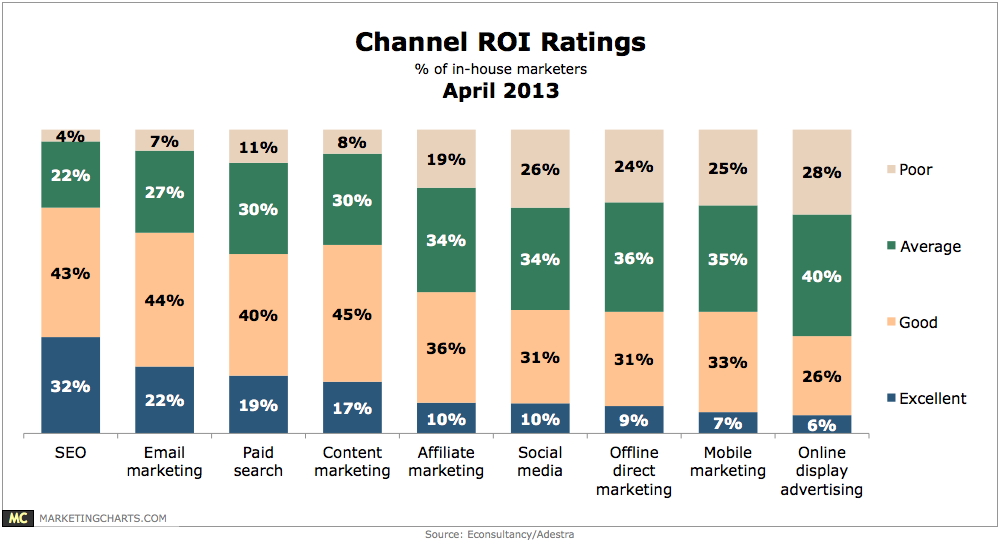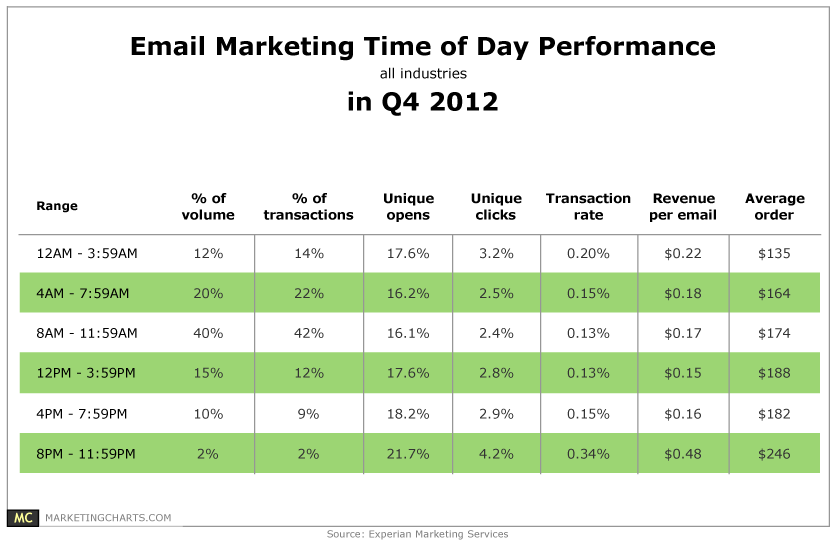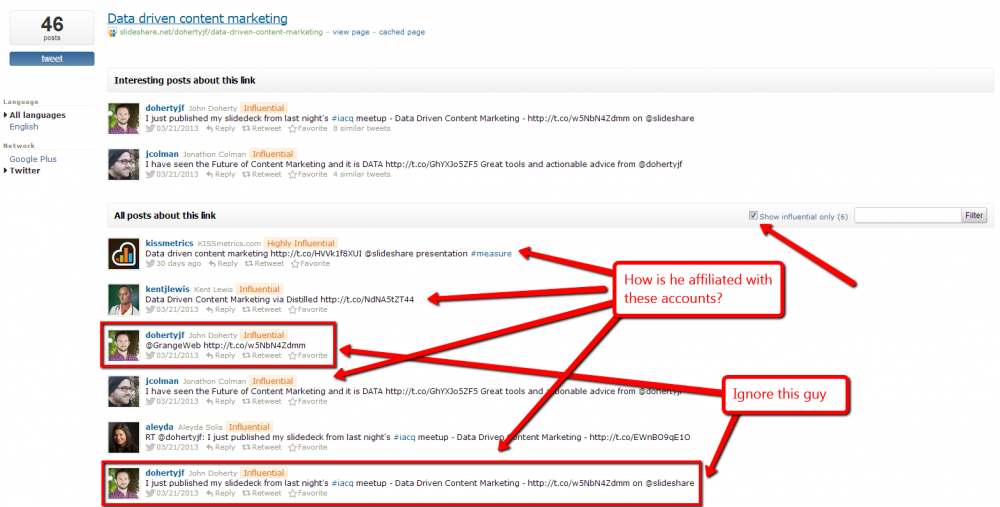
Competitor Research In An Inbound Marketing World
We all know that online marketing is changing. When I started in online marketing a few years ago, all the talk was still about links and directories and ways to get more exact match anchor text. Some SEOs were doing some pretty nefarious things and profiting from it, but most of that came crashing down starting in February 2011 (with the first Panda algorithm) and then over the past couple of years with Panda, Penguin, and the EMD update all rolling out and affecting websites the world over.
Rand talked last week about the changing SEO metrics, and today I want to talk about the changing landscape of competitor analysis as more and more people make the shift from just SEO to inbound marketing. Since inbound marketing includes a lot more than SEO, if we want to be effective inbound/online marketing consultants, we need to not only have proficiency or knowledge of the different roles of an inbound marketer, but when we get into actionable recommendations for our clients or our company we need to know how to analyze what our competitors are doing across the whole marketing space, both to identify deficiencies in their strategy that you can exploit as well as to see what they are doing that you should also adopt for your company.
So today I am going to talk about a few of the key areas of inbound marketing where you should investigate because they are likely to bring the largest returns (I'm talking about the Pareto Principle, which I was reintroduced to by Dan Shure in this post on his site about applying it to SEO).
By the way, if you're interested in more on this topic, I'm going to focus on it pretty heavily in my upcoming Searchlove presentation in Boston. I'd love to see you there! Ok, let's dive in.
Email marketing
If you've been in marketing for a while, you should know that email can have an incredible return on investment for the small amount of setup that it takes. In fact it's the 2nd best ROI for many businesses, according to eConsultancy:

What if I told you that 39.16% of our conversions on the Distilled website (micro and macro conversions, including DistilledU, conferences, and lead gen forms) were touched by an email during the conversion process? What if I told you that this is more than either organic or social? Here's the proof:
If you're not doing email marketing, you probably should be. But what works best in your industry? Often we're paralyzed by the multiplicity of options presented to us by any choice, and research has recently shown that limiting the number of choices can lead to better and less risky decisions than when we're faced with a seemingly infinite number. By being smart about our analysis, we can reduce the number of choices that we have to make around email, like:
- What time do I send my emails?
- How often should I send them?
- Should I invest in good design?
- What kind of call to action should I include to start with?
Stalk your competitor's emails
If you're interested in investing in email marketing, I'd first suggest that you subscribe to your competitors' email lists so that you receive emails whenever they send them to their entire list. You won't be able to learn how they're segmenting their lists, but you'll find their frequency, their subject lines that get you to click, and how they are calling you to action. Stephen Pavlovich talked about this at Searchlove New York in 2011, where he suggested that you save your competitor's emails to your Evernote, with a specific tag, so that you can go back and get ideas for your own emails. While this is an amazing tip that we should all do, it's step 1 and we should all go further. I like to take the emails sent by my competitors and analyze them in an Excel spreadsheet, taking into account:
- Name
- Email date
- Time arrived
- Custom design?
- Call to action
- Subject line
- Did I click?
- Was the email triggered (i.e. was it influenced by something I did recently on their site)?
My analysis looks like this. Feel free to use something similar:
I recently found a chart on MarketingCharts.com (one of my favorite sites) that talked about fallacies surrounding email marketing according to Experian. Their way of setting up their analysis may help you as well:

Throw Into Wordle
Now we need to find what common themes our competitors are using when they send out their emails. The best way to visualize this (I'm a visual person) is by using one of my favorite tools, Wordle. When I put in the words that my competitors have been using for their subject lines, I get this:
Protip 1: To get the best results, use the biggest dataset you can find.
Protip 2: Use this knowledge to inform the content you should be doing outside of blogging :-)
Content production
Content is a huge part of inbound marketing. You know this, I know this, everyone who reads Moz knows this. So why do I say it? Because once you go beyond "content is king" knowledge, you can actually take this belief that use it to create content that your readers want. When it comes to competitor analysis, you can either choose to do this manually or in a more automated (but possibly less accurate) fashion.
Manually
Using the information gleaned from the Wordle above, I can then go run advanced queries in Google to find how much my competitors are talking about the different content types listed. For example, if I run a [site:seogadget.com "webinar"] search, I get 14 results:
That's not very many (and no, I'm not calling out SEOgadget here. They do absolutely phenomenal work!), so if I'm starting a marketing agency, or have one that I want to build, this may be an area that I should investigate. At Distilled we run conferences because a) we had someone internally that wanted to do them, b) we thought we could run a darn good conference, and c) because we saw a need for the type of conference we could put on.
More automated
If you want to automate this a bit, you can at least find the number of times that a competitor has mentioned the type of content on their site in the URL. I chose to use the URL instead of just on the site because people will usually put the important words in the URL. We're not looking for all mentions of a content type like "webinar" - instead we want webinars that only they have put on and published on their site.
So what I have done is built out a spreadsheet for you, a rough tool, using IMPORTXML to scrape the number of results that a site has for the content type. If you're at all good with scraping in Gdocs, you can make this sheet customized to fit your needs and content types I'm sure!
Go here to open and make a copy of the spreadsheet.
Social amplification
You do follow your competitors on Twitter, or at least have them in a list, right? Oh you don't. Go do that. I'll wait.
*Whistles tune*
Following your competitors on social media will allow you to see their strategies for social promotion (if any). While this is nothing groundbreaking, it's also not something that many people are doing already. You can see how often they are tweeting their own content, if they are tweeting the content of others, and it can also inform you about the kind of content that they are creating.
Since you now know what kind of content they are creating, you can figure out their social promotion strategy outside of their own accounts. Who are their tweeterati (aka, who shares their posts)? Better than that, who are the influential people that share their content? Once you find this, you can then decide whether you will be able to get those same people to promote your content, and how to do that, or if you need to find new people to connect with solely (using a tool like FollowerWonk).
Lucky for you, Topsy allows you to find who the influential people are that share a specific URL. After you enter a URL with "Tweets" selected on Topsy, you can then select "Show Influential Only", like below:

This is all well and good, but want to do it faster? I built a spreadsheet for you where you can take a URL and it builds the Topsy URL for you, then scrapes the Influential people. Once again, throw this into a Wordle (or Tagxedo, which is more stable) and see who the influencers are!
Go here to make a copy of the spreadsheet.
I hope this post gives you ideas for what is possible for the new competitor analysis within inbound marketing. I'd love to hear in the comments what other ways you are using to do competitor analysis these days.
The author's views are entirely their own (excluding the unlikely event of hypnosis) and may not always reflect the views of Moz.




Comments
Please keep your comments TAGFEE by following the community etiquette
Comments are closed. Got a burning question? Head to our Q&A section to start a new conversation.